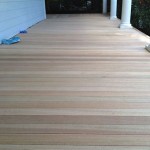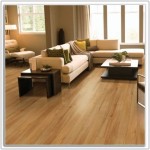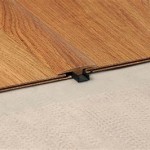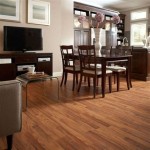Best Flooring Options for Outdoor Rabbits: A Comprehensive Guide
Selecting the appropriate flooring for an outdoor rabbit enclosure is a critical element in ensuring the health, safety, and comfort of the animals. The flooring material directly impacts hygiene, ease of cleaning, protection from the elements and potential predators, and even the overall psychological well-being of the rabbits. Therefore, careful consideration must be given to various factors before making a final decision.
The ideal outdoor rabbit enclosure flooring should offer several key attributes. It should be durable enough to withstand the elements and the constant activity of the rabbits. It must be easy to clean and maintain to prevent the buildup of harmful bacteria and parasites. The surface should be comfortable for the rabbits' delicate paws and free from potential hazards like splinters or sharp edges. Furthermore, the chosen material should provide insulation against extreme temperatures and offer adequate drainage to prevent water accumulation. Finally, the cost-effectiveness of the flooring material, along with its long-term durability, should be factored into the decision-making process.
Factors to Consider When Choosing Rabbit Flooring
Choosing the right flooring for outdoor rabbits involves more than just picking a visually appealing option. Several key factors must be evaluated to ensure the rabbits' welfare and the practicality of maintaining the enclosure. These include hygiene, durability, safety, drainage, and insulation. Ignoring any of these factors could lead to health problems for the rabbits or create an unmanageable environment for the owner.
Hygiene is paramount. Rabbits are fastidious creatures, and their environment must be kept clean to prevent the spread of disease. The flooring material should be non-absorbent and easy to disinfect. Porous materials like untreated wood can absorb urine and feces, creating a breeding ground for bacteria and foul odors. Similarly, materials that are difficult to clean, such as deeply textured surfaces, can harbor contaminants. Regular cleaning with appropriate disinfectants is crucial, regardless of the chosen flooring, but the material itself should facilitate this process.
Durability is another essential consideration. Outdoor rabbit enclosures are exposed to the elements, including rain, sun, and fluctuating temperatures. The flooring material must be able to withstand these conditions without deteriorating or becoming damaged. Weak or brittle materials may crack, splinter, or degrade over time, creating potential hazards for the rabbits. Consider the typical weather conditions in the location and choose a material that is known for its resilience and longevity.
Safety is of utmost importance. The flooring should not pose any risk of injury to the rabbits. Avoid materials with sharp edges, splinters, or small parts that could be ingested. The surface should be relatively smooth to prevent foot sores or other paw injuries. It should also provide adequate traction to prevent slips and falls. If using wire mesh, ensure the gauge is small enough to prevent the rabbits' feet from getting caught, and consider covering it with a more comfortable material.
Adequate drainage is crucial to prevent water accumulation in the enclosure. Standing water can create a damp and unsanitary environment, increasing the risk of fungal infections and other health problems. The flooring should be slightly sloped to allow water to drain away quickly and efficiently. Consider using a permeable material or installing a drainage system to further improve water management.
Insulation is particularly important in regions with extreme temperatures. The flooring should help to regulate the temperature inside the enclosure, providing warmth in the winter and keeping it cool in the summer. Materials like wood and certain types of rubber can provide some insulation, while metal and concrete tend to conduct heat and cold more readily. Consider the climate and choose a flooring material that will help to maintain a comfortable temperature for the rabbits.
Exploring Different Flooring Options
Several flooring options are commonly used for outdoor rabbit enclosures, each with its own advantages and disadvantages. These include solid flooring, wire mesh, and various types of bedding material. Understanding the pros and cons of each option is crucial for making an informed decision based on individual needs and circumstances.
Solid flooring, such as concrete or plywood, provides a stable and relatively easy-to-clean surface. Concrete is highly durable and can withstand harsh weather conditions. However, it can be cold and hard, potentially leading to foot problems if the rabbits spend too much time on it without adequate bedding. Plywood is a more affordable option, but it is susceptible to water damage and can harbor bacteria if not properly sealed. When using plywood, ensure it is treated with a non-toxic sealant to prevent moisture absorption and extend its lifespan.
Wire mesh flooring is often used to allow droppings to fall through, keeping the enclosure cleaner. However, wire mesh can be uncomfortable for rabbits' feet and can lead to sores or injuries if the gauge is too large. If using wire mesh, it is essential to choose a small gauge and consider covering a portion of the floor with a solid material or bedding to provide a more comfortable resting surface. Regularly inspect the wire mesh for any broken or damaged sections to prevent injuries.
Various types of bedding material can be used in conjunction with solid or wire mesh flooring to provide cushioning, insulation, and absorbency. Straw, hay, and wood shavings are common choices. Straw provides good insulation and is relatively inexpensive, but it can be dusty and may not be very absorbent. Hay is a natural and comfortable option, but it can quickly become soiled and needs to be replaced frequently. Wood shavings are absorbent and easy to clean, but some types can be harmful to rabbits if ingested. Avoid using cedar or pine shavings, as they contain aromatic oils that can cause respiratory problems. Aspen shavings are a safer alternative.
Rubber mats and interlocking tiles are also gaining popularity as flooring options for outdoor rabbit enclosures. Rubber mats are durable, easy to clean, and provide a soft, cushioned surface. Interlocking tiles are similar but offer more flexibility in terms of size and shape. However, some rubber materials can emit a strong odor, and they may not be suitable for rabbits that like to chew. Choose rubber mats and tiles that are specifically designed for animal use and are non-toxic.
Specific Flooring Materials: Pros and Cons
A more detailed look at specific flooring materials will further aid in making the best choice for an outdoor rabbit enclosure. Each material presents a unique set of advantages and disadvantages with respect to cost, maintenance, durability, and rabbit health.
Concrete: Concrete is undeniably durable and resistant to wear and tear. It's also relatively easy to clean with a hose and disinfectant. However, its hardness can lead to sore hocks (ulcerations on the rabbits' heels) if rabbits are constantly on it. Concrete is also not insulating making it cold in winter and hot in summer. Covering concrete with straw, hay or a soft, washable rug can mitigate some of these problems.
Plywood (Sealed): Sealed plywood offers a smoother surface than bare wood and is easier to wipe down. It provides some insulation, making it warmer than concrete in colder weather. However, even sealed plywood can become damaged by urine and moisture over time, leading to rot and bacterial growth. Regular sealing is crucial. Choose a non-toxic sealant specifically designed for animal environments.
Wire Mesh (Small Gauge): Wire mesh allows for easy cleaning as droppings fall through. It promotes good hygiene by preventing the accumulation of waste. However, it can be very uncomfortable for rabbits' feet, leading to sore hocks and injuries. Covering a portion of the wire mesh with a solid flooring material or bedding is essential to provide a comfortable resting area.
Rubber Mats: Rubber mats are relatively soft, easy to clean, and offer good insulation. They are also resistant to water damage. However, some rubber mats can emit a strong odor when new, and some rabbits may chew on them. Choose mats that are specifically designed for animal use and are non-toxic. Ensure the mats are securely fastened to prevent rabbits from digging underneath them.
Astroturf (Artificial Grass): Astroturf provides a visually appealing and relatively soft surface. It is easy to clean with a hose and disinfectant. However, it can harbor bacteria if not cleaned regularly, and some rabbits may try to eat it. Choose a high-quality astroturf that is specifically designed for pet use and is non-toxic. Regularly clean and disinfect the astroturf to prevent the buildup of bacteria and odors.
Dirt/Natural Ground: Allowing direct access to the ground allows rabbits to engage in natural behaviors like digging and burrowing. However, it presents several challenges, including difficulty in cleaning, risk of parasite infestations, and potential for rabbits to escape by digging under the enclosure walls. Predator access is also a major concern. Using a buried wire mesh barrier around the perimeter of the enclosure can help prevent digging and predator intrusion. Regularly inspect the ground for signs of parasites and maintain a strict deworming schedule.
Ultimately, the best flooring option for outdoor rabbits depends on individual circumstances, including budget, climate, and the rabbits' specific needs. Careful consideration of the factors discussed above will help to ensure a safe, healthy, and comfortable environment for the animals.

Best Flooring For Outside Runs Rabbits United Forum Outdoor Rabbit Run Dog Kennel

The Best Rabbit Flooring For Cages And Agility

What Is The Best Floor For My Bunny Enclosure Bunnyproof

Optional Mesh Flooring Prevents Your Rabbits From Burrowing Out And Being Left Unprotected It Also Stops Pred Rabbit Cages Outdoor Hutch Habitat

Setting Up An Outdoor Rabbit Space The Cape Coop

Setting Up An Outdoor Rabbit Space The Cape Coop

The Best Rabbit Flooring For Cages And Agility

The Rabbit House Hutches

Setting Up An Outdoor Rabbit Space The Cape Coop

What S The Best Flooring For Rabbit Runs Home Roost
Related Posts








